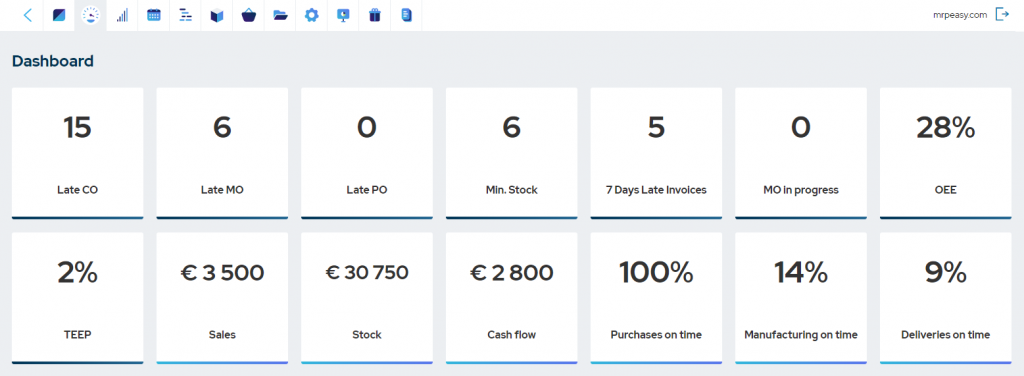An Urgent Matter of Supply Chain Preference
COVID-19 has accentuated problems and accelerated change in a global supply chain environment already under stress.

You can also listen to this article:
Supply disruptions are no longer a once in a generation act of god; they have become routine. Demand is increasingly fragmented and unpredictable. The risks of Just in Time begin to outweigh the benefits; large, long term commitments to low-cost suppliers half a world away no longer look so attractive.
In theory, the uncertainty and complexity rule presents an opportunity for smaller manufacturers and suppliers who are closer to the market and that are agile and responsive enough to change in a way that challenges larger organizations. But complexity is costly. A number of countermeasures can be taken along the supply chain. Retailers may rationalize the variety of merchandise they stock. OEMs can reduce the degree of customization they offer.
These measures could see the niches for products and services offered by smaller firms disappear as companies limit complexity, uncertainty, and cost by reducing their supplier base. With major procurements now having to be constantly monitored and actively managed, companies don’t feel they have the bandwidth to interact with the myriad small suppliers.
SMEs risk being squeezed out of the eco-system. There is a similar dynamic upstream in the supply chain – suppliers with their hands full dealing with major accounts, changing their requirements on a daily basis, are less eager to service small, intermittent orders, or to prioritize smaller customers in times of shortage.
Small manufacturers have to make themselves ‘preferred suppliers’ or indeed, ‘preferred customers’. This goes beyond technical and quality standards, competitive pricing, service levels, and financial checks. It is about making the SME as easy and hassle-free to trade with as the larger companies – if not, more so. ‘Seamless’ is the word: the customer’s procurement, operations, and finance people should be essentially unaware of the boundary between their own company and their SME supplier. Recent developments in business systems automation, delivered through SaaS, mean that even SME suppliers can come close to this supply chain nirvana. An appropriate MRP system is at the core of delivering such a system.
Now, the small manufacturer may reasonably say that they don’t really need sophisticated manufacturing resource planning – the issues are well understood and can be accommodated on a couple of simple spreadsheets. But look at this from the corporate customers’ point of view – what do they want, expect, and increasingly demand? In three words, simplicity, visibility, and confidence.

Can the SME provide, very quickly, a quotation that accurately reflects real production costs, and offer guaranteed, achievable delivery times? Can the SME dynamically reschedule production and delivery as customers’ requirements vary? How robust and well documented is batch and serial number tracking? Can the SME raise orders on its own suppliers quickly and easily? How timely and effective is the commissioning of carrier and courier requirements? How easy is it to generate dispatch advice and delivery notes? How accurate are the SME’s invoices?
Crucially, how much of this activity can be done electronically and automatically, machine to machine, without phone calls, emails, and costly, time-consuming, and error-prone rekeying of data? Is the firm set up for e-commerce? E-invoicing, at the very least, is often now an entry-level requirement for trading with major corporates, and indeed with the public sector. Corporates expect that if with one key-stroke they send a revised order/delivery schedule, everything else will happen from their point of view, automatically.
While commercial customers expect to purchase through portals and websites, many small manufacturers are also building Direct to Consumer e-commerce channels, partly due to the Covid-19 lockdown.
Take small brewers for example. The Covid-19 lockdown has been devastating for the industry. While the big brands were able to supply grocery chains in volume, smaller independent brewers who sold mainly through pubs, bars and restaurants have been hit hard and need to adapt. According to a survey of small brewers across the UK, conducted in April 2020 by the Society of Independent Brewers (SIBA), 70% of breweries are offering new delivery or takeaway services in order to help supply their local communities with independent craft beer. 61% of those breweries now offer free delivery to local communities. The survey also found a 55% increase in online orders.
As with other small manufacturers, this raises the need for, amongst other things, dynamic real-time rescheduling, and public visibility of stocks and delivery times.
Customers, no matter where they are in the supply chain, demand visibility, and confidence. They need the certainty that the goods are in stock, or an order has completed a key manufacturing process, or that it will arrive in the booked docking slot. Customers want the assurance that, if problems do arise, the SME has the systems to pick them up, act on them, and if necessary advise the customer. They may require real-time access to and visibility of progress reports.
This can’t be achieved sensibly by phone calls, emails, and huddling over a brief-case full of spreadsheets, even when that is allowed again. It needs systems and, although not all these applications are core MRP functions, MRP provides the backbone from which they all depend.
Building an MRP backbone is no longer a long term, big-ticket, consultant-intensive project. The system from MRPeasy is highly graphical and intuitive, easy to use, with low training requirements. They can be readily tailored to the business practices of the individual firm – usually by the users themselves. As a Cloud-based software offering, the initial investment is low and on-costs are determined by the features used and the level of usage, which is highly scalable, without a long-term contract commitment. Updates and patches can be installed automatically from the Cloud, as can new features developed from the shared experience of the wider user community.




